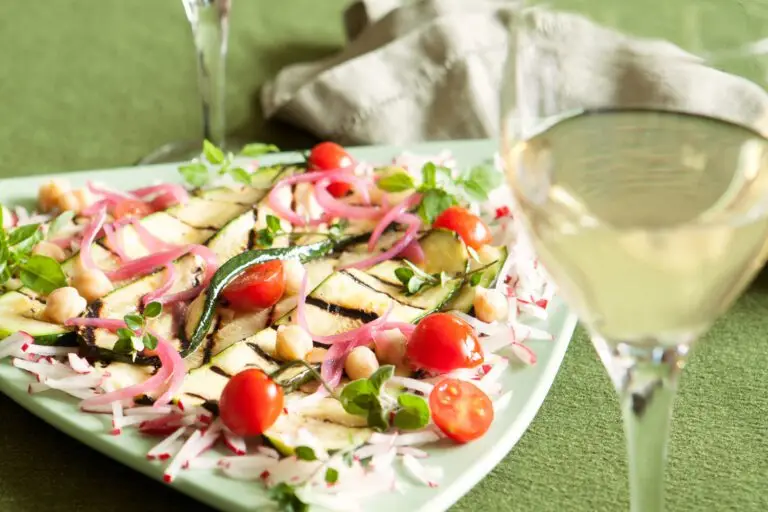Recipe by Nancy Johnson; Wine Commentary by Gary Twining.
I’m always surprised by friends who say they have no idea how to eat an artichoke. I grew up eating artichokes, but I can imagine those mysterious little green globes can be a bit of an enigma. The bud of a thistle, artichokes sport spiky, thorn-tipped leaves and a frightening, fuzzy little choke that is absolutely not fit for eating. But there is a surprising treat waiting beneath that noxious choke: a sweet, tender heart, fabulous and well worth the effort to get to it.
To purchase, choose artichokes that feel heavy, with tightly closed leaves. To prepare, use scissors to cut off the thorny tip of each leaf. Slice off the top of each artichoke with a serrated bread knife. Remove any small leaves at the base. Cut the stem so the artichoke can be set upright. Rinse each artichoke under cold running water.
In a large pot, add several inches of water, 3 cloves of garlic, a wedge or two of lemon, 1/2 teaspoon salt and a couple of bay leaves. Place a steamer basket or colander over water. Place artichokes in steamer basket. Over high heat, bring water to a boil, reduce heat and cover. Simmer artichokes 25 to 30 minutes or until the outer leaves can be easily pulled off.
Prepare lemon butter:
1/2 cup butter
Juice of 1/2 lemon
In small saucepan, melt butter. Add lemon juice.
To eat an artichoke, pull off each leaf, one at a time. You will see a tender bit at the bottom of each leaf. Dip in lemon butter and scrape the tender part of the leaf against your teeth. Discard leaf. Continue until you have enjoyed the sweet flesh at the bottom of each inner leaf. When you reach the choke, use a spoon to scrape it out and discard. Now you’ve reached the tender heart. Dip into lemon butter and enjoy.
Gary: Artichokes are one of the most wine-challenging vegetables due to their astringency. However, a very pleasing pairing can be made with crisp white wines with bright flavors, no oak and firm acidity. Look for Sauvignon Blanc, Pinot Grigio, Cortese di Gavi, Soave and Verdicchio.





